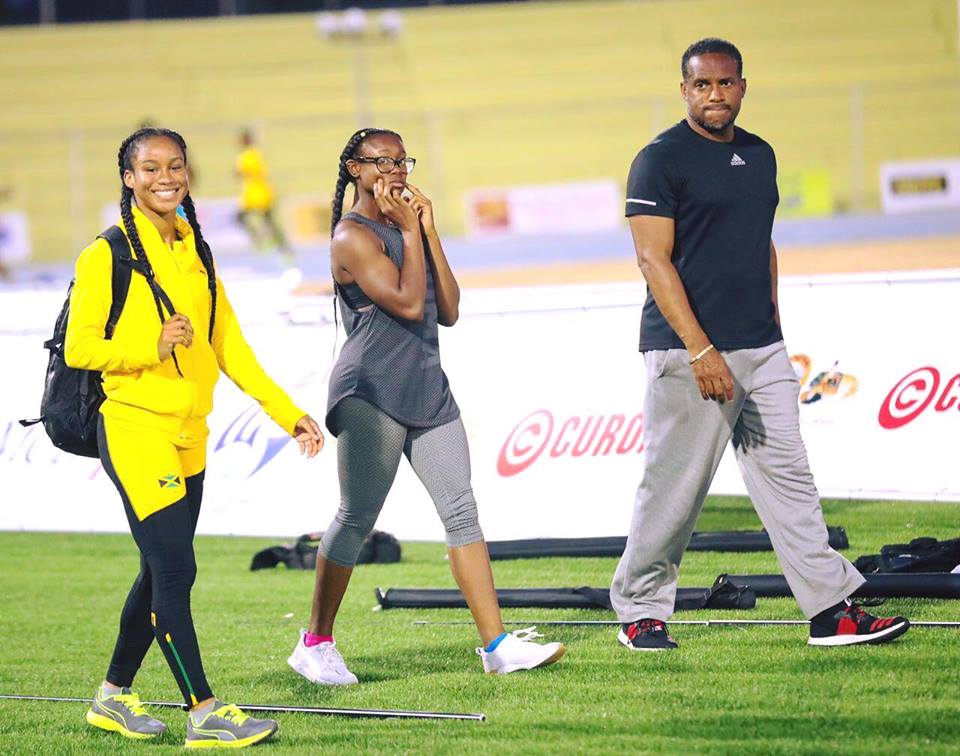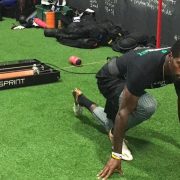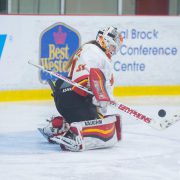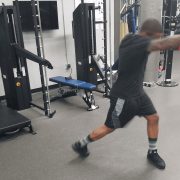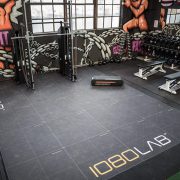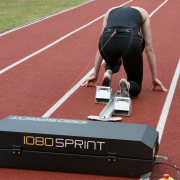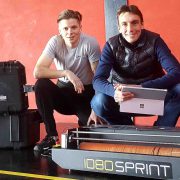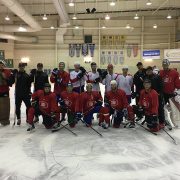Ato Boldon did not think much about throwing away the old-school red diary he used as a training log. With 10 senior-level international medals in his house, he was not lacking mementoes from his sprinting days. Years later, he realized binning his logs was the best thing he could have done for the third leg of his athletics career.
“I had to start from scratch,” Boldon says about his early days coaching Khalifa St. Fort. “I never wanted to be a coach. I didn’t think I had the disposition for it. Probably still don’t.” But once he started working with St. Fort, the challenge and the process of coaching became irresistible to the former 100 / 200-meter man.
Despite being one of the most recognizable names, faces and voices of the sport as an athlete and media personality, Boldon is decidedly an outsider as a coach. He does not have coaching degrees or certificates. He did not apprentice under the old masters. He does not dispense daily coaching wisdom on his blog or social media. If the coaches’ fraternity ever held a meeting, he would be somewhere else. Quite possibly at another sporting event, watching and learning what he can from outside track & field.
“The core of my philosophy is in other sports: baseball, football, basketball. There’s one way to shoot a free throw, one proper way to swing a baseball bat. There are more fundamentals being taught in other sports.
“Florida has all this track talent, but too many of these athletes have bad form. They have no fundamentals. Track & field is way behind the curve in setting the standards for their coaches, and having coaches who live up to those standards. You have people holding stop-watches and calling themselves coaches. If you are a coach, you have to be able to teach it. If you cannot teach it, you are not coaching.”
Boldon’s approach to coaching is a patient, long-term version of drinking from a firehose. “Don’t worry about their age. Just teach them what you have learned about the sport. Just teach them everything.”
Boldon puts the movements in the athletes’ heads so they can put it into their bodies. Drills start at a stand-still. Boldon teaches A-skips, B-skips and the rest with the athlete rooted to a spot. Once they achieve mastery of the movements in place, they start walking the drill. When they can walk the drill to perfection, they progress to the speed of their choice. Eventually, they are doing the drill at full speed.
Aside from giving Boldon the opportunities to interject with a cue or correction, this approach lets every athlete learn at their own pace. After several years of coaching Boldon has seen enough to know learning is not linear. An athlete can struggle with a drill or even a particular component of a drill, until one day “something just clicks and I’m watching them warm up and I say to their parents or a teammate ‘Who is that? That’s not who was here a week ago.’”
The teammates are an important part of Ato Boldon’s system. New athletes can look around at practice and see what they are supposed to do. Boldon demands his senior athletes help teach the younger athletes – not just lead by example, but actually teach. He believes nothing sharpens and proves your skill than your ability to explain it. When the experienced athlete teaches a new athlete, both move towards mastery.
Meanwhile, Boldon adds to his own mastery in whatever free time he has. His athletes know they can text him any time of day or night and he will quickly respond, because he is up to 2 or 3 in the morning studying and figuring out new things (not that his athletes would be up that late, of course).
Two questions drive Boldon’s inquiries: What is the science saying? What has changed since I ran?
“Of course there are elements of my own career in what I am doing with my kids. I am trying to figure out the new things.”
Boldon self-describes as a “tech guy,” but he still has a place for the classics. Resisted sprinting in the pre-season and off-season involves pushing an old-school sled across the grass. The varied surface provides a different stimulus to the athletes while reducing the impact relative to the same work on the track.
When he shifts the direction of force into assisted sprinting, though, the techie takes over. Boldon uses the 1080 Sprint to tow his athletes slightly faster than their maximum speed. He has experimented to find the optimal dose of distance and volume at an overspeed. In his early days with the 1080 Sprint he had his athletes run too far with assistance. Now he has the assistance drop out after the first 25-30 meters of a sprint. This creates a slingshot effect for the athlete: They accelerate with assistance bringing them to just over their maximum speed. When the assistance cuts out, the tow cable disconnects from their belt and they coast the remainder of the distance. In a set of 9 x 60 meters, for example, Boldon will include assistance for 3-4 reps.
“What I had to discover about the 1080 Sprint is that it’s not the entrée, it’s the garnish, for lack of a better word. You use it at certain spots and sparingly, especially given the age of the kids. If you do too much distance or volume, it will affect their form and potentially put them at risk.”
Boldon always comes back to the fundamentals of sport. His athletes are more technically sound than he was at their age because he brings a level of expertise that was not available in his youth. But he also recognizes they are still kids, and that competition and enjoyment are essential elements of all sport, not just youth sports.
“You don’t want kids getting lost in the technique of running. They have to know the fun of running. But between 6 and 16, there also has to be an introduction to why you swing the arm back from the elbow, why you have to have your head in a certain posture or your knees up to a certain position.”
Ato Boldon’s athletes are all the proof he needs to validate his methods. Instead of certificates testifying to his coaching education, Boldon had the fastest junior in the world in 2017: Khalifa St. Fort, 11.06 seconds in the 100m. Last month, Briana Williams set the U15 world record in the 100m, at 11.13 seconds.
They provide the example for their teammates, who are as young as 10 years old. “When you are around people doing the right thing every day, it accelerates the learning process. New people who just come in can look to their left or right every day and see someone who is where they should want to be in a few years.”
Perhaps in 15 years one of those athletes will follow Boldon’s example. First step: throw away their logs.
